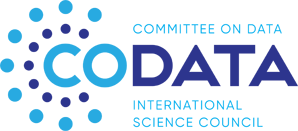The CODATA Task Group on FAIR Data for Disaster Risk Research (FAIR-DRR) organises occasional webinars on DRR data related issues. The 2020 series resulted in discussions and collaborations, the outcome of which is a newly published paper authored by Fakhruddin (Tonkin+Taylor, NZ; chair of the CODATA TG on FAIR Data for DRR); Sir Peter Gluckman (President Elect, International Science Council); Anne Bardsley (Koi Tū: The Centre for Informed Futures, University of Auckland, New Zealand); Georgina Griffiths (MetService, New Zealand); and Andrew McElroy (United Nations Office for Disaster Risk Reduction, Fiji).

Creating resilient communities with medium-range hazard warning systems, Progress in Disaster Science, 2021, https://doi.
This paper discusses the opportunities to use medium-range ensemble forecasting to support decision making to increase the resilience of communities and the ways to embed holistic early warning systems in risk-informed sustainable development. It provides a set of recommendations for medium-range forecasting applications for people-centred early warnings and disaster preparedness. This paper also contributes to the Sendai Framework Global Target G.
Abstract
Resilience to natural hazards requires integrated risk management – from hazard identification and risk register, hazard warnings and risk communication, to preparation for and response when an event occurs. Medium-range hazard warnings play a vital role in strategic and tactical planning for resilience to natural hazards. Research advancements have rapidly improved observation, modelling and analysis of natural hazard forecasting for disaster risk reduction. However, many of these advances have not been tailored to benefit communities at risk as geophysical and hydrometeorological hazards continue to claim thousands of lives and cause irreparable damage to homes, businesses and critical infrastructure. This paper discusses the opportunities to use medium-range ensemble forecasting to support decision making to increase the resilience of communities and the ways to embed holistic early warning systems in risk-informed sustainable development. It provides a set of recommendations for medium range forecasting applications for people-centred early warnings and disaster preparedness.
